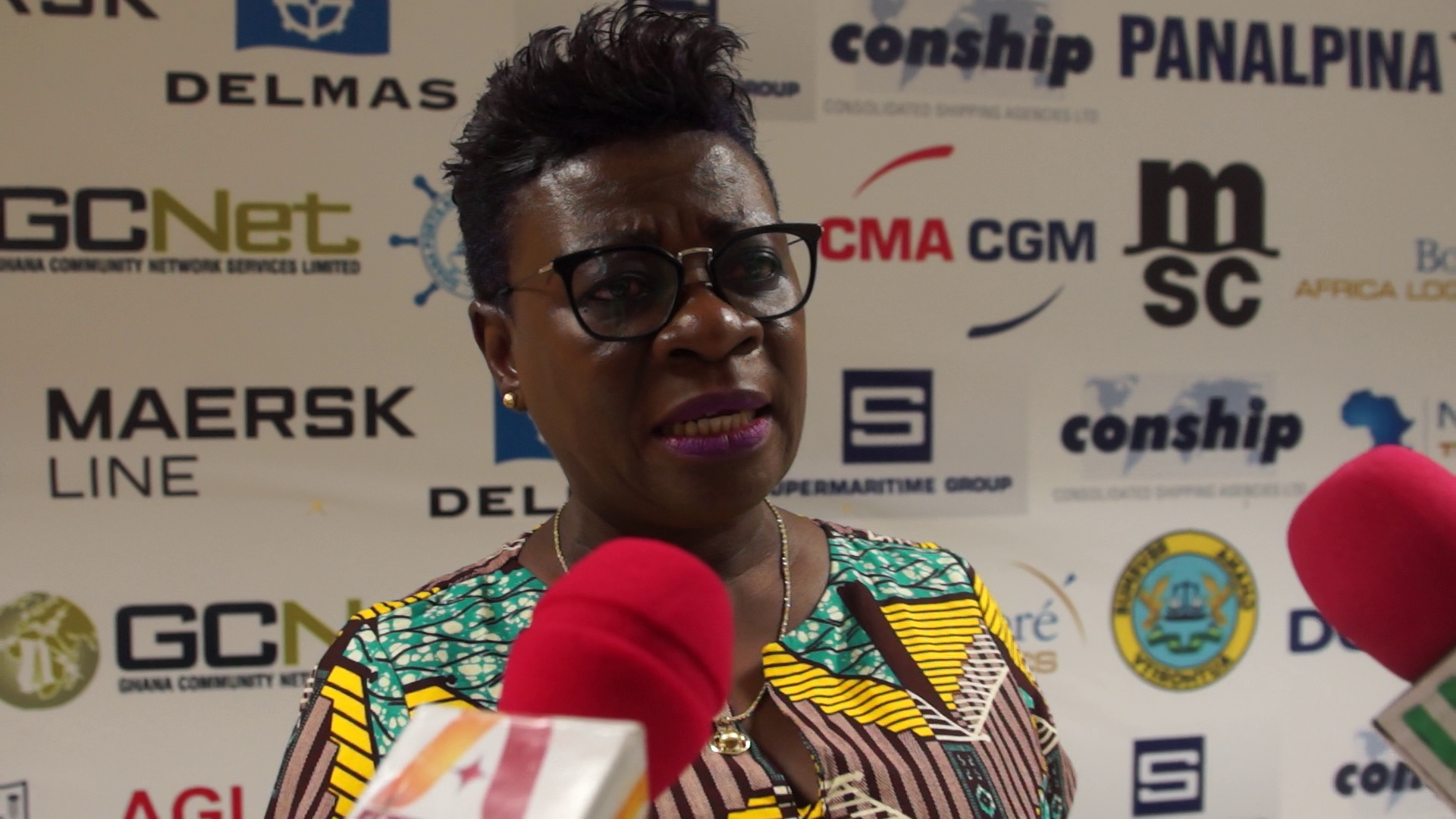
The Chief Executive Officer of the Ghana Shippers Authority (GSA), Benonita Bismarck, has said Ghana’s maritime trade outlook for this year is positive, which is expected to post a good growth of not less than 10 per cent.
The total volume of trade imports for the first half year was 7.16 million metric tonnes compared 6.75 million recorded in the same period last year.
At the Shipping Quarter and Outlook in Accra, Bismarck said the GSA would continue to engage members of the Ghana Union of Traders Association, Association of Ghana Industry and other shippers, to educate and sensitize them on ways to avoid the payment of demurrages and rent charges.
She noted that the implementation of the paperless ports system in September last year, had helped importers to process their documents ahead of the arrival of shipping lines.
The system, she said, had also helped in the decline of demurrages from GH¢38.5 million in 2017 to GH¢28.5 million in the same period this year.
She assured that the Authority would organise a stakeholder conference before the end of the year to critically analyse and assess the performance of the paperless system on the shipping industry.
The CEO of the GSA urged stakeholders in the shipping industry to co-operate with the government for the successful roll-out of the First Port Duty Rule slated for December this year, to prevent the diversion of transit goods meant for the landlocked countries from ending up on the local market.
The report revealed that majority of Ghana’s seaborne imports trade came from the Far East Range (Asia) totalling 1,904,317 metric tonnes (mt), representing 27 percent of the total import trade.
Twenty-five per cent of the country’s import trade (1,802,427 mt) came from Africa, an increase of 10.4 per cent over the previous year’s figure of 1. 63 million mt.
The major commodities imported from the Africa range, which experienced significant increases were petroleum products, clinker and crude oil.
Other trades range included the United Kingdom 95,528 mt, North Continent 1,297,662 mt, Middle East 1,319,304 mt, North America 273,039 mt and OT 463,446 mt.
The report indicated that Ghana’s maritime trade outlook was positive and impressive with a total import trade volume of 7.16 million mt compared to 6.75 million mt recorded in the same period last year.
This comprised 2.93 million mt of Liner cargo 863,751 mt of Break bulk, 1,708,944 mt of Dry bulk cargo and 1,656,733 mt of Liquid bulk imports. Some commodities imported include cars, second hand clothing, meat, petroleum products, among others.
The imports volume increased by 5.9 per cent compared to 2017 for the trade types. There were recorded increases in Liner imports and Break bulk imports of 15.6 per cent and 17.9 per cent respectively.
There were, however, recorded decreases of 1.2 per cent and 5.9 per cent in Dry bulk and Liquid bulk imports.
The report said the country’s cargo throughput for the first half of 2018 posted an increase of 14.3 per cent compared to the same period last year.
For instance, the country recorded 11,753,594 mt cargo throughputs from January-June, compared to 10,283,720 mt in 2017, representing 14.29 per cent increase.
Out of the 11. 75 million mt cargo throughputs, Tema Port recorded 8.1 million mt representing 69 per cent, while Takoradi recorded 3.65 million mt of the total trade volume, representing 31 per cent.
Meanwhile, the transhipment imports amounted to 522,012mt, whilst transit exports recorded 49,042mt.
The report said the nation recorded total trade volume of 4.03 million mt, representing 33.5 per cent increase over that of 2017, comprising 1,173,024 mt, of Liner items, 148, 972 mt of Break bulk items, 2,560,776 mt of Dry bulk and 144,023 mt of Liquid bulk.
Ghana’s total import laden containers for the first half year recorded 328,801 TEUS compared to 289,825 TEUS in 2017, representing 13.5 per cent increment over the previous year.
The transit trade volume of Burkina Faso, Mali and Niger for the first half of the year amounted to 497,574 mt, representing a rise of 10.7 per cent compared to the same period last year.
The transit trade comprised imports of 449,710 mt and export of 47,864 mt. These involved commodities such as processed foods/beverage and iron, steel, plates, among others.
Source: GNA